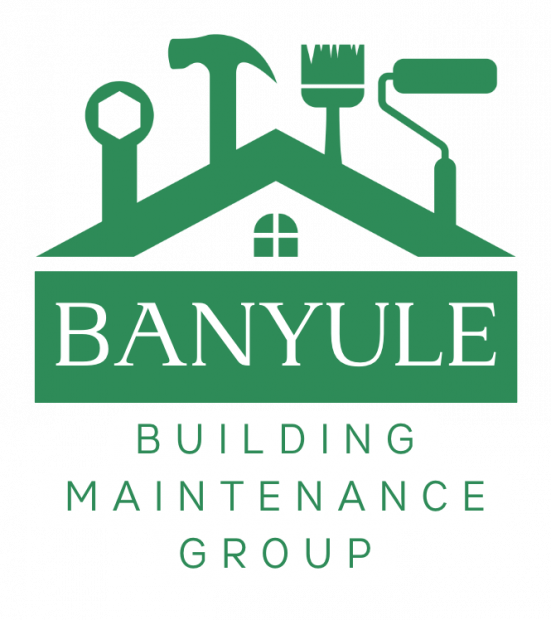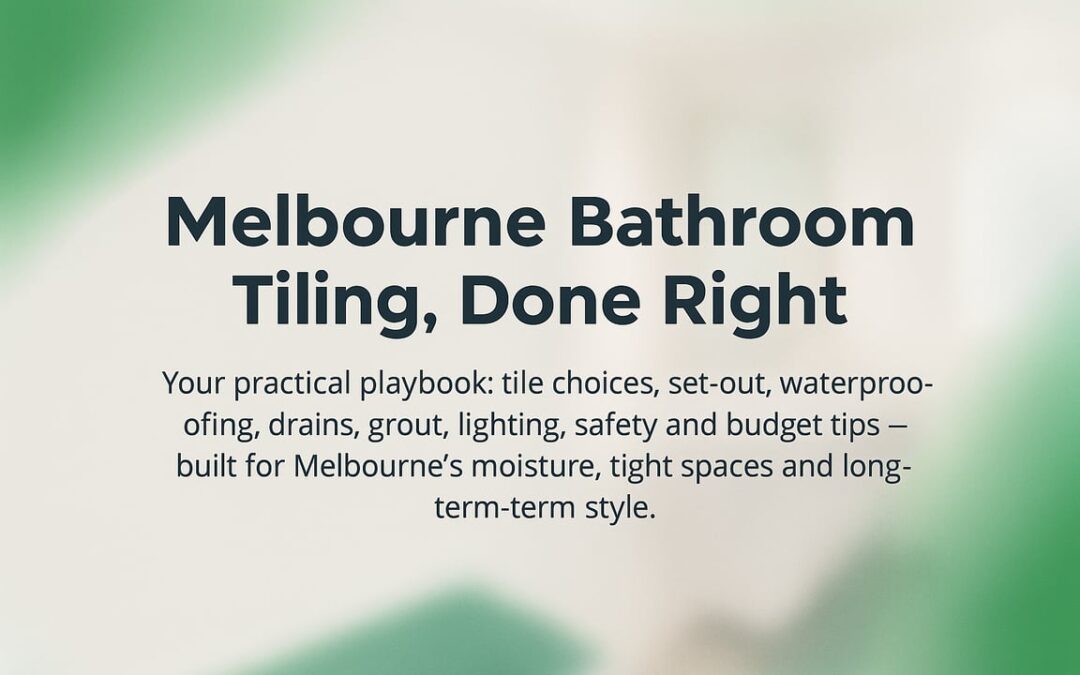Bathroom Tiling Melbourne: A Practical Playbook For Beautiful, Durable Renovations
Good tiling quietly does heavy lifting: it protects the structure, simplifies cleaning, and sets the tone for style. This guide distills Melbourne-specific insights on substrates, set-out, fall, grout, and maintenance so homeowners can make confident decisions that last.
Related service: If planning a full upgrade, coordinated bathroom tiling Melbourne within an end-to-end renovation streamlines design, waterproofing, and finishing.
What Makes Melbourne Bathrooms Different
- Mixed construction types: Many homes have timber subfloors in original rooms and concrete in extensions. Movement and moisture risks differ.
- Microclimates: Bayside salt, inner-city humidity spikes, and cooler eastern suburbs change ventilation and slip-resistance priorities.
- Tight footprints: Common plan constraints reward smart set-out, larger-format tiles, and frameless detailing to keep rooms feeling open.
Tile Choices That Age Well
Material affects durability, maintenance, and slip safety.
- Porcelain: Dense and water-resistant; ideal for floors and showers. Look for P2-P4 slip ratings for residential wet areas.
- Ceramic: Excellent for walls; lighter and cost-effective. Not as tough as porcelain on floors.
- Natural stone: Beautiful but porous; needs sealing and more maintenance. Consider honed finishes to reduce slip risk.
- Large-format slabs: Fewer joints, faster cleaning. Requires skilled handling and flat substrates.
Tip: For smaller rooms, use larger wall tiles with aligned grout lines and light grout tones to reduce visual clutter.
Set-Out: The Hidden Art Behind Seamless Results
Good layouts start on paper. The aim is balanced cuts and aligned features.
- Find the hero sightlines: Prioritize the back wall of the shower, entry view, and vanity wall for centered tiles or feature bands.
- Balance cuts: Avoid slivers under 30 mm on edges or around niches. Distribute cuts symmetrically.
- Align with fixtures: Center grout lines on mixers, spouts, and shower heads when possible without compromising waterproofing.
- Account for falls: Floors in showers and wet zones need slope to drains without awkward wedge cuts; use smaller mosaics on tight falls.
Substrates, Waterproofing, and Movement
The best tiles fail when the base is wrong. A methodical sequence reduces risk.
- Check flatness: Large-format tiles demand flatter substrates. Feather-finish or screed where needed.
- Timber subfloors: Use appropriate underlay or fiber-cement sheeting fixed per specification; control deflection.
- Waterproofing: Continuous membranes in showers and wet rooms, with cured times respected before tiling.
- Movement joints: Use perimeter and intermediate joints for larger rooms or sun-exposed walls to reduce cracking.
Pro insight: A level entry shower requires planning at framing/screed stage. Retrofitting fall after the fact leads to awkward steps or ponding.
Drainage and Fall: Comfort Meets Compliance
Water should move to the drain quickly, quietly, and invisibly.
- Linear drains: Enable large-format floor tiles with fewer cuts. Place along the back wall or entry depending on layout.
- Point drains: Work well with mosaics; ensure consistent falls from all sides to avoid lipping.
- Thresholds: For level-entry showers, combine subtle falls, appropriate membranes, and screen placement to contain spray.
Grout and Sealants: Small Choices, Big Impact
- Epoxy grout: Highly stain-resistant in showers and niches. Slightly more difficult to apply but lowers long-term upkeep.
- Cementitious grout: Cost-effective and forgiving; seal high-exposure zones for better stain resistance.
- Silicone junctions: Use at all changes of plane (wall-to-floor, wall-to-wall) to handle movement; color-match for a clean look.
- Joint width: 2-3 mm for rectified porcelain; follow manufacturer guidance for non-rectified tiles.
Layout Patterns That Work In Real Homes
- Stacked or grid: Crisp and modern; magnifies alignment precision.
- Brick bond: Classic and forgiving; mind lippage with longer planks, use 1/3 offsets.
- Herringbone or chevron: Adds movement; best used as a feature to control cost and visual busyness.
- Vertical stacks: Visually heightens walls in low-ceiling rooms.
Ventilation, Lighting, and Cleaning Ease
- Ventilation: Duct exhaust fans to the exterior, not into roof cavities. Moisture control preserves grout and paint.
- Lighting: Combine task lighting near face height with ambient ceiling lights; avoid glare on glossy wall tiles.
- Cleaning: Favor large-format tiles, frameless screens, and wall-hung fixtures to reduce grime traps.
Budget Levers Without Sacrificing Quality
- Keep plumbing positions: Save on rerouting and pour budget into surface quality.
- Hero feature, simple field: Use one premium feature tile and pair with a durable porcelain field tile.
- Selective epoxy: Use epoxy grout in shower floors and niches, cementitious elsewhere to balance cost and performance.
- Smart thresholds: Level-entry where feasible; otherwise a low-profile step with precise fall and screen placement.
Safety and Future-Proofing
- Slip resistance: Choose appropriate slip ratings for floor tiles in wet zones.
- Warm floors: Under-tile heating pairs well with porcelain and improves winter comfort.
- Reinforcement: Add noggins for future grab rails before sheeting; invisible now, invaluable later.
Mini Checklists
Compact Ensuite
- Large-format wall tiles in light tones; stacked layout.
- Linear drain at back wall; frameless screen.
- Recessed niche aligned with grout lines.
- Wall-hung toilet and vanity to open floor area.
Main Family Bathroom
- Porcelain floor, epoxy grout in shower, cementitious elsewhere.
- Durable matt finishes to hide water marks.
- Towel and robe hook placements planned with tile set-out.
- External-ducted exhaust and layered lighting.
Future-Friendly Upgrade
- Level-entry shower with appropriate falls.
- Slip-rated floor, warm neutral palette for longevity.
- In-wall noggins and mixer heights set for accessibility.
FAQs
What tile size works best in a small bathroom?
Larger wall tiles reduce grout lines and make spaces feel bigger. Pair with smaller floor mosaics in shower zones to manage falls without lipping.
Is glossy or matt better for walls?
Gloss reflects light and brightens; matt hides marks and fingerprints. Use gloss on feature walls and matt near high-touch zones for practicality.
How do movement joints affect the look?
Perimeter and planned intermediate joints prevent cracks. Color-matched sealants keep them discreet while allowing expansion and contraction.
Can grout discolor be prevented?
Epoxy grout resists stains well. For cementitious grout, sealing and good ventilation reduce discoloration; gentle pH-neutral cleaners help long term.

